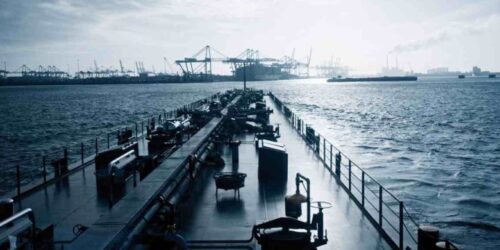The World Bank has a new report out this week on decarbonising maritime transport in which it specifically recommends countries pull back from investing in further LNG bunkering infrastructure.
The World Bank has concluded that green ammonia closely followed by green hydrogen strike the advantageous balance of favourable features among a range of different candidate bunker fuels for ships. These features relate to the lifecycle greenhouse gas emissions, broader environmental factors, the scalability, the economics, and the technical and safety implications of each fuel.
Ammonia or hydrogen also have the advantage of having multiple production pathways, the bank pointed out, providing a significant strategic advantage which alleviates concerns about capacity limits and technology issues.
The bank recommends countries avoid new public policy that supports LNG as a bunker fuel and reconsider existing policy support
The bank preferred ammonia over hydrogen because hydrogen is expensive to store and handle, particularly onboard a vessel.
Both biofuels and synthetic carbon-based fuels are not expected to become a major power source, the bank predicted.
Taking a swipe at LNG as a fuel, the bank recommended that countries should avoid new public policy that supports LNG as a bunker fuel, reconsider existing policy support, and continue to regulate methane emissions.
“LNG is effectively liquefied methane, and methane is itself a highly potent GHG. Over 20-year and 100-year time horizons, methane is respectively 86 times and 36 times more potent a GHG than CO2. Therefore, any GHG emissions from unburnt methane released to the atmosphere – called methane leakage – can diminish or even entirely offset the theoretical GHG benefit of the use of LNG,” the bank warned.
According to Clarksons, 3.6% of the current merchant fleet is LNG fuel capable in gt terms, while 26.3% of the global orderbook is primed to be LNG ready.
“Zero-carbon fuels will need to represent at least 5% of the bunker fuel mix by 2030 to put shipping on a GHG trajectory consistent with the initial IMO GHG strategy, as well as the Paris Agreement’s temperature goals, ” said Binyam Reja, World Bank acting global director for transport. “This means they need to be scaled up rapidly.”
The research makes the case that strategic policy interventions are needed to hasten the sector’s energy transition with the bank coming out in favour of a meaningful carbon price to create a level playing field for the development and utilisation of zero-carbon bunker fuels.
Keen to dismiss the methane leakage argument, two LNG bunker lobby groups revealed details this week of an independent, peer-reviewed study that claims GHG reductions of up to 23% are achievable now from using LNG as a marine fuel, depending on the marine technology employed. This is compared with the emissions of current oil-based marine fuels measured from well-to-wake .
This report used the latest primary data to assess all major types of marine engines and global sources of supply with data provided by original equipment manufacturers including Caterpillar MaK, Caterpillar Solar Turbines, GE, MAN Energy Solutions, Rolls Royce (MTU), Wärtsilä, and Winterthur Gas & Diesel, as well as from ExxonMobil, Shell, and Total on the supply side. Methane emissions from the supply chains as well as methane released during the onboard combustion process – also known as methane slip – have been included in the analysis.
Peter Keller, chairman of lobby group SEA-LNG, commented: “Often based on outdated data, methane slip has become an overused argument for those wishing to justify inaction.”
The study claims that by 2030 methane slip will have been “virtually eliminated” as technologica







